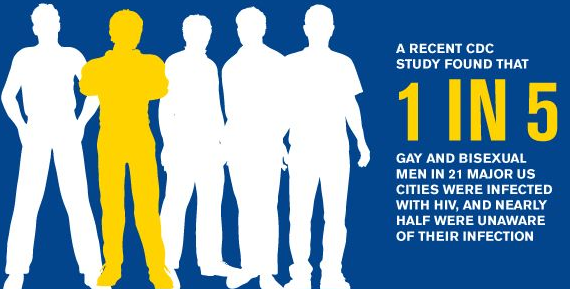Homophobia and HIV: How Stigma Fuels The Epidemic
The AIDS epidemic brings along with it painful stories of people who were cast away, ignored and discriminated against; the homophobia that was rampant before was only fueled further by the moralistic high-ground that the AIDS epidemic conveniently provided it with. The fueled discrimination and prejudice placed gay and bisexual men in a vulnerable position. The social and cultural factors that shaped the epidemic burdened them and made them more vulnerable to the disease. The reason behind highlighting this context is the fact that those homophobic ideals have been carried forward and complicate the prevention as well as treatment of HIV.

Culture played a huge role in the AIDS epidemic, the moralistic and homophobic images shaped the context for AIDS. The way the epidemic was put forth and shaped through popular media and even governmental awareness campaigns was homophobic. It perpetuated the stereotypes about the LGBTQIA+ community, especially gay and bisexual men who were they key demographic that were effected by HIV. It perpetuated images of the LGBTQIA+ community as ‘deviant,’ promiscuous and as something that was dirty. The homophobia that was already in place before the epidemic was only popularized and made even more common. The government awareness campaigns were often rooted in moralistic images of monogamy and celibacy instead of comprehensive sex education. Instead of safety, fear was propagated. This fear added onto the homophobia, the LGBTQIA+ community was suddenly seen as the reason for this epidemic. AIDS was seen as a largely ‘gay disease’ and anal sex was made even more taboo, this further entrenched the LGBTQIA+ community into marginalization

AIDS and The Disproportionate Health Effects
It is no surprise that HIV disproportionately affects the LGBTQIA+ community. Many studies have found that 1 in 6 gay and bisexual men will be infected with HIV in their lifetimes, this number is even more graver for the transgender community. The reason behind these disproportionate health effects is the discrimination and marginalization that the LGBTQIA+ community faces which as a result, makes them more vulnerable to HIV. Being a part of the LGBTQIA+ community can often mean being subjected to bias and discrimination at every step of your life. In a lot of countries, it is perfectly legal to discriminate against someone based on their sexuality. Legally, there are not a lot of laws that protect the LGBTQIA+ community. They can lose their jobs, be subjected to homelessness, and lack of healthcare. For example, faced with adversity, most transgender people have to engage in sex work to survive which increases their vulnerability towards catching HIV and other STDs. It is the same bias that often discourages people from the LGBTQIA+ community from getting tested for HIV. In turn, HIV prevention programs are often underfunded and are of no help to those who actually need it, the most vulnerable group, the LGBTQIA+ community.

Conclusion
The moralistic and homophobic images of the AIDS epidemic have a lasting impact on the lives of the LGBTQIA+ community. The cultural and social modeling of the disease and how it was presented during the 1950s made the disease a cultural epidemic as well, it made the LGBTQIA+ community even more vulnerable by making it synonymous with immorality. Instead of proper sex education that was inclusive and talked about safe sex for all sexualities, the government-funded awareness campaigns aligned themselves with the social inequalities and promoted celibacy, monogamy and heterosexuality. Anything else was seen as the reason behind the epidemic. HIV is a health epidemic as well as a cultural epidemic, and while great steps have been made in the scientific community regarding the disease, the cultural aspect is still untouched.
Author

